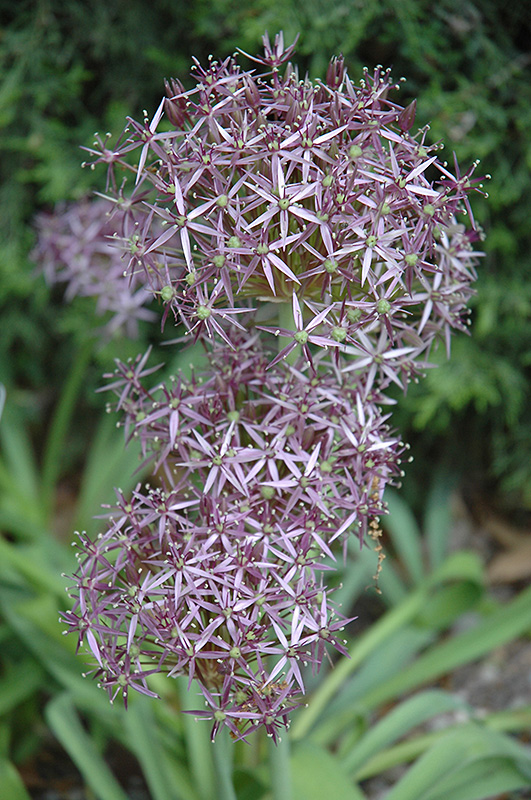Star Of Persia Onion
Description
A beautiful late-spring and early summer selection that looks lovely in garden beds, borders or in fresh cut arrangements; tall flower stalks produce star shaped, silver-purple flowers, forming a large globe; low, mounded foliage; low maintenance
Landscape Attributes
Star Of Persia Onion is an open herbaceous perennial with tall flower stalks held atop a low mound of foliage. Its relatively fine texture sets it apart from other garden plants with less refined foliage.
Star Of Persia Onion is recommended for the following landscape applications;
Planting & Growing
Star Of Persia Onion will grow to be about 12 inches tall at maturity extending to 24 inches tall with the flowers, with a spread of 12 inches. It grows at a medium rate, and under ideal conditions can be expected to live for approximately 5 years. As an herbaceous perennial, this plant will usually die back to the crown each winter, and will regrow from the base each spring. Be careful not to disturb the crown in late winter when it may not be readily seen! As this plant tends to go dormant in summer, it is best interplanted with late-season bloomers to hide the dying foliage.
This plant should only be grown in full sunlight. It does best in average to evenly moist conditions, but will not tolerate standing water. It is not particular as to soil type or pH, and is able to handle environmental salt. It is highly tolerant of urban pollution and will even thrive in inner city environments. This species is not originally from North America. It can be propagated by multiplication of the underground bulbs.
Star Of Persia Onion is a fine choice for the garden, but it is also a good selection for planting in outdoor pots and containers. With its upright habit of growth, it is best suited for use as a 'thriller' in the 'spiller-thriller-filler' container combination; plant it near the center of the pot, surrounded by smaller plants and those that spill over the edges. Note that when growing plants in outdoor containers and baskets, they may require more frequent waterings than they would in the yard or garden.

